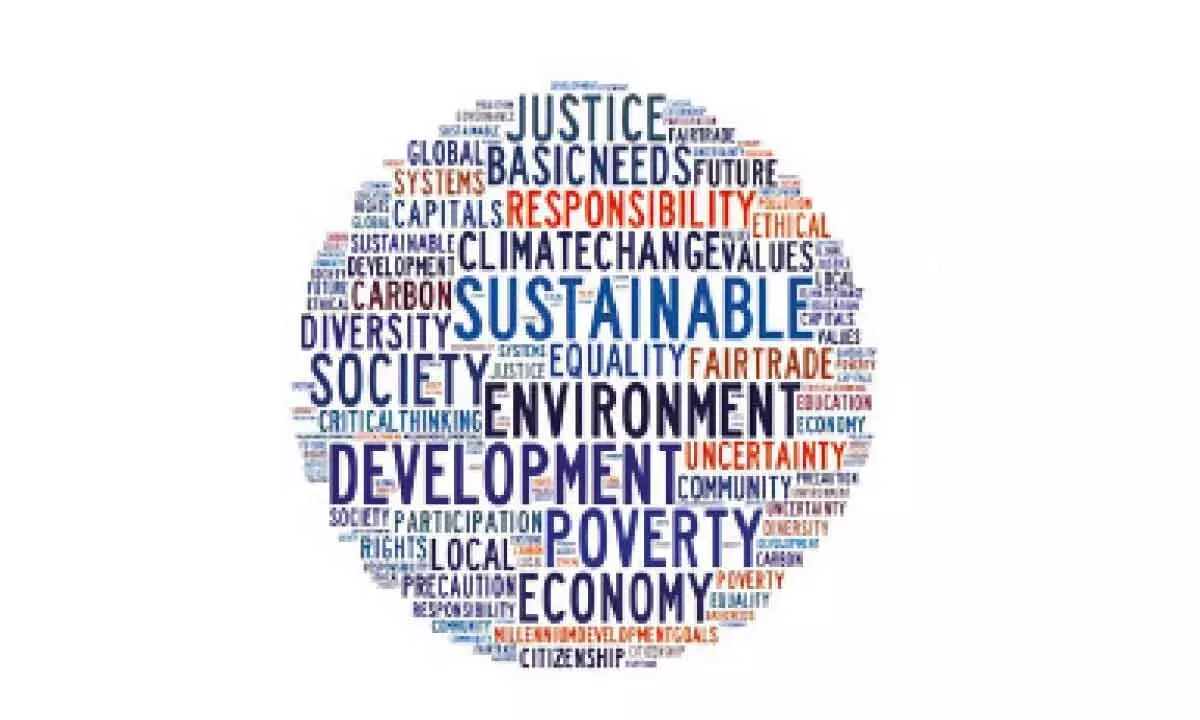India’s sustainable growth story is a benchmark for other nations
Maintaining stability and its structural reforms have contributed to India’s economic resilience amid global challenges
image for illustrative purpose

Amidst a challenging global scenario, India has emerged as a significant economic and geopolitical power. Its actions in the coming year could lay the groundwork for the country to become the world’s third largest economy in the next five years and a developed nation by 2047, setting an example on inclusive, sustainable economic growth, digital development and climate action.
On the economic front, India has been a key growth engine for the world, contributing 16% to the global growth in 2023. The country’s growth rate of 7.2% in fiscal 2022-2023 was the second-highest among the G20 countries and almost twice the average for emerging market economies that year.
India’s efforts to maintain stability and enact structural reforms have contributed to its economic resilience in the face of global challenges. Investments in upgrading infrastructure and connectivity, including projects like the Bharatmala highway programme, the Sagarmala project for port-led development and the Smart Cities Mission, are transforming the country's landscape and playing a pivotal role in the country’s economic advancement.
In the face of escalating climate-related concerns, India also plays a key leadership role in the global fight against climate change. With its Mission LiFE of Lifestyle for Environment and a concerted push for green hydrogen, India has demonstrated a firm commitment to a growth trajectory that balances economic advancement with ecological responsibility. Adding to this was the launch of the International Solar Alliance and the Coalition for Disaster Resilient Infrastructure, and the proposed global grid for renewables. A major announcement made by Prime Minister Narendra Modi at COP28 in Dubai was the introduction of the ‘Green Credit Initiative’ as a substitute for carbon credits.
Moving forward, fulfilling India’s national and global ambitions will require strategic policymaking to tread the delicate balance between economic growth, social development and environmental sustainability. The demographics will be advantageous to its growth story only if it is coupled with broad labour market reforms and human development measures to skill one of the world’s largest workforces and address youth unemployment.
India's economy is of global importance. It has a large and young population and an open and democratic political system. It is already the third largest economy and contributor to global economic growth, yet there is considerable untapped potential. Despite having more than a sixth of the world's population, the country produces only seven per cent of the world's output.
India’s demographic dividend is another important factor in its prosperity. The young and dynamic population serves as a driving force for economic growth. With a large proportion of its citizens in the working-age group, India has the potential to fuel productivity, innovation and consumption, contributing significantly to economic expansion.
India's growth path will be driven by how effectively it harnesses and rewards the efforts of its greatest natural asset – its people. India has the second largest population in the world with more than 1.4 billion people. India's largest state, Uttar Pradesh, is bigger than Brazil, the world's fifth most populous country.1,2 Within the next decade India's population will overtake China's to become the world's largest. By 2035, the United Nations projects that India's population will have reached almost 1.6 billion people, on its way to a peak of almost 1.7 billion by the early 2060s.
On the socio-economic front, over the last few years, India has built a digital transformation model which has helped it move towards inclusion and a good quality of life for all. The spread of mobile phones and internet, opening of millions of bank accounts, unique digital identity in the form of Aadhaar, and digital payments model of UPI have formed the base of Digital India on which new-age technologies are being mounted to solve local and global societal issues.
One important component of India’s digital transformation has been its citizen centric approach. This has been not only in terms of service delivery, but also in effective government outreach to the people that has instilled a digital culture into an otherwise technologically resistant and cash-based economy. Importantly, the fact that it is low cost and easily scalable, allows it to be effectively replicated in other developing countries often experiencing digital divide and resource constraints like India did.
The world is now witnessing a nation on the rise, with a booming economy and a commitment to inclusivity, sustainability, and international collaboration.
India is poised to play defining role in shaping the future of the global economy in 2024 and beyond.

